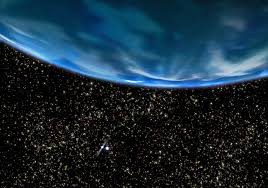 . Ultraviolet telescope mounted on running in 2016, the Russian satellite " Lomonosov ", found in the earth's atmosphere powerful light " explosions ", the nature of which is unknown as long as, said in an interview Last news Director of the Institute of nuclear physics of Moscow state University Mikhail Panasyuk. . Ultraviolet telescope mounted on running in 2016, the Russian satellite " Lomonosov ", found in the earth's atmosphere powerful light " explosions ", the nature of which is unknown as long as, said in an interview Last news Director of the Institute of nuclear physics of Moscow state University Mikhail Panasyuk.
Panasiuk said that the whole atmosphere of the Earth is lit by the bursts of ultraviolet radiation, some of which scientist is known sprites (electric discharges in the mesosphere and the thermosphere) and alvy (huge faint flash in the upper part of the thundercloud).
The scientist also said that the record with the help installed on the "Lomonosov" telescope cosmic rays of extremely high energies was harder than expected because the Earth's atmosphere is very "littered" with different flares.
"Among such outbreaks have natural phenomena and man-made - for example, we fly over the airport and" see " the signal lights. Our telescope registers, and the lights of the cities, and also detects the influence of powerful radio stations on the upper atmosphere. All this, of course, prevent in search of traces of cosmic particles. But we have learned to identify natural phenomena that we need ", - explained the Director of the Institute of nuclear physics.
The spacecraft "Lomonosov" was made by the Corporation VNIIEM by order of the Moscow state University. The satellite launched into orbit launch vehicle " Soyuz-2. 1A "in April 2016, during the first ever launch from the cosmodrome" East ".
Lomonosov engaged in the study of transient luminous events (short flash) in the upper part of the Earth's atmosphere and radiation characteristics of the earth's magnetosphere. His mass is 625 kilograms. The satellite is equipped with space telescope to measure the energy spectrum and chemical composition of cosmic rays of extremely high energy from earth orbit. In addition, the interior is equipped with sets of instruments to study cosmic gamma-ray bursts and the Earth's magnetosphere.
in November 2018 in the work of the scientific equipment of the satellite was having issues, which until resolved.
<span style="color:darkgray
sections: Politics
|